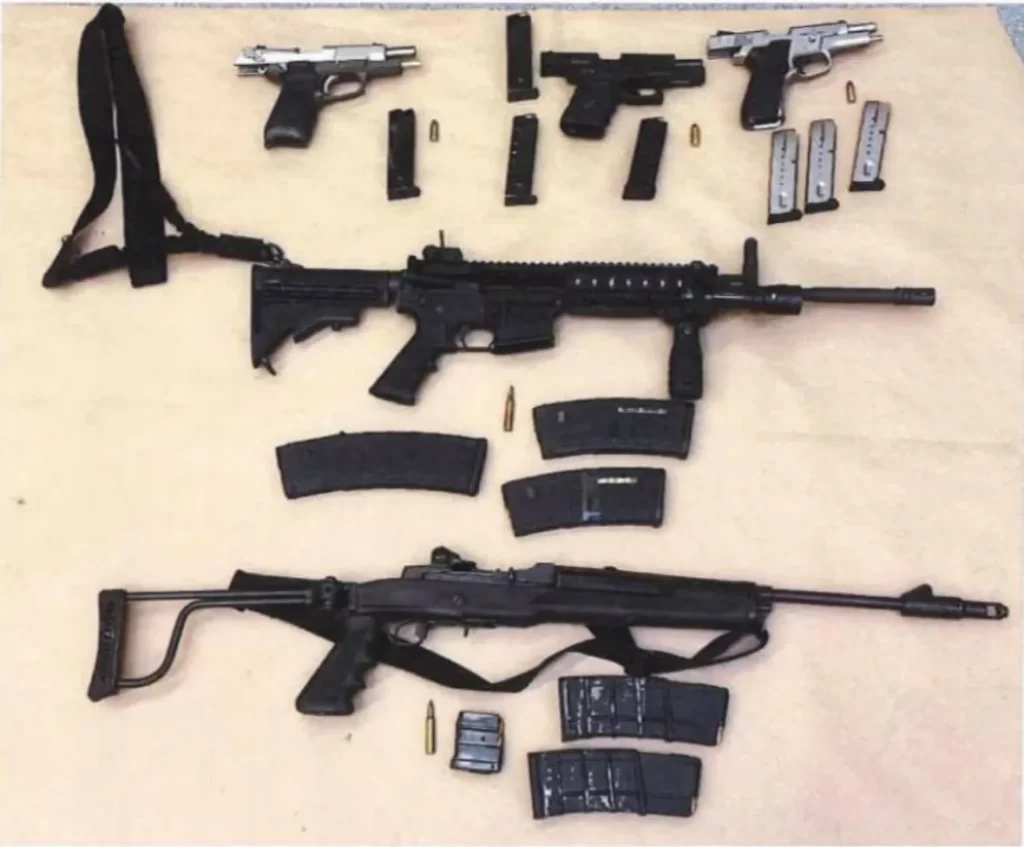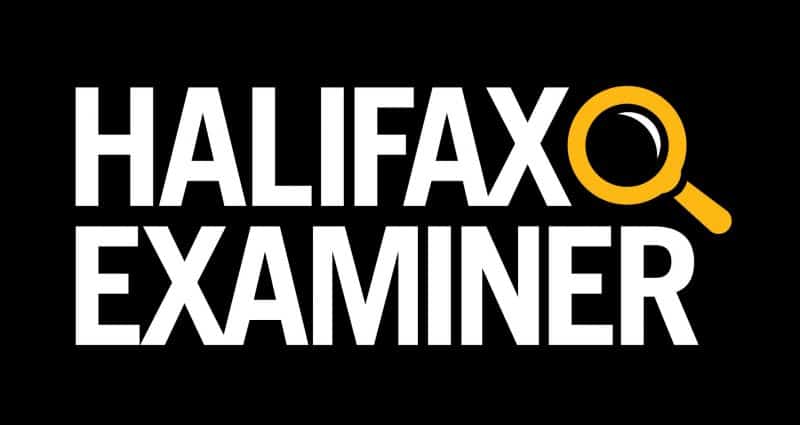Did the RCMP commissioner attempt to unduly interfere in a police investigation? Or did local Mounties try to unduly control the narrative? Those are the questions at the heart of recent parliamentary hearings. They’re also the subject of this week’s column.

The gunman in the deadliest school shooting in Texas history bought two AR-style rifles legally just after his 18th birthday — days before his assault on Robb Elementary School in Uvalde.
—Texas Tribune
May 25, 2022
It is worth noting that this news report — which not only identified the weapons (two AR platform rifles) used in this spring’s school shooting in Uvalde, Texas, but also detailed where and when and how the gunman purchased them — was published less than 24 hours after the shooting.
We’ll come back to that.
Our question for today is about another mass shooting — the horrific murder of 22 people in Nova Scotia in April 2020 — and the ongoing controversy over whether publicly identifying the weapons the gunman used could have compromised police investigations.
You know the controversy I mean, the dispute over what was said — and what was meant — during an April 28 conference call among senior Mounties. The participants included national RCMP commissioner Brenda Lucki, Nova Scotia chief superintendents Chris Leather and Darren Campbell, and then-director of H-Division’s strategic communications unit Lia Scanlan.
Although he wasn’t a participant on the call himself, then-federal Public Safety Minister Bill Blair was a significant focus of the others’ conversation.
One of the Nova Scotia Mass Casualty Commission’s foundational documents details what transpired during the meeting and quotes from Campbell’s handwritten notes about his version of what went down.
Campbell claimed Lucki told the Nova Scotia Mounties she had “promised” Blair, the Minister of Public Safety, and the Prime Minister’s Office that the RCMP would release information about the weapons used in the shooting.
When Campbell argued that publicizing such information could jeopardize the still ongoing investigation by the RCMP and United States law enforcement, he says Lucki told him: “We [the Nova Scotia RCMP] didn’t understand that this was tied to pending gun control legislation that would make officers and public safer by or through this legislation.”
The fact that the justice department did not provide the Mass Casualty Commission with Campbell’s notes — which essentially accused the commissioner of pressuring her underlings to publicly disclose compromising information about the killer’s weapons — until two and a half months after other requested documents naturally raised legitimate alarms on the opposition benches in Ottawa. (Why that happened is another subject for another day.)
The House of Commons’ Public Safety Committee has been holding hearings this summer to try to determine if what Lucki said during the call constituted political interference in the police investigation.
Last week, the committee heard from some of the Nova Scotia-based participants in the meeting.
Let’s dig deeper.
The conference call happened 10 days after the shootings. The Mounties were already facing public scrutiny over their abysmal communications failures in the first days following the tragedy.
During the conference call, Lucki, the country’s top Mountie, “expressed disappointment in the press briefings carried out by the Nova Scotia RCMP.”
We know from the foundational documents and testimony at the Mass Casualty Commission some of what had been happening behind the scenes that provoked her “disappointment.”
Even though senior Mounties knew at the time of their first press conference the day after the shooting spree began that the gunman had killed at least 17 people, Leather and Scanlan deliberately decided to use the number 10 instead.
The following day, Leather — despite being aware one of the victims was a teenager — told reporters the victims were all adults.
While the local Mountie brass was doing its best to obfuscate and confuse, Commissioner Lucki granted interviews to media outlets, telling them the actual numbers she’d learned from the on-the-ground Mounties in Nova Scotia. (I don’t want to make it sound as if Lucki was the white hat here; there were enough black hats to go around, but at least, in this one instance, she opted for transparency.)
Scanlan was not amused. Soon after media outlets began reporting Lucki’s actual numbers, she fired off a frustrated email to members of the RCMP’s national communications team:
Can I make a request that we stop changing numbers on victims? Please allow us to lead the release of information. It looks fragmented and inconsistent. The release of 10 was decided upon for good reason… We knew at the time of the press event that it was more than 10 but that is what we came to ground on for the event.
To be clear, the “good reason” was for her team’s convenience. It had nothing to do with the facts or the public interest in them. “I’ve had to ask my entire team to turn their phones off,” she complained after reporters began pressing for the latest actual known death count.
Over the next week, local Mounties continued to do their best not to say anything about anything, including refusing to answer reporters’ questions about the weapons the killer used.
During a press briefing the same day as the conference call, Campbell repeatedly deflected questions concerning specifics about the weapons the killer had in his possession. That information, he told one reporter, is “part of the active and ongoing investigation and it’s a piece that right now, unfortunately, I can’t share with you.”
We’ll come back to that justification.
According to Campbell’s notes, Lucki believed the Nova Scotia RCMP had disobeyed her instructions to make public specific information on the firearms used by the killer — and made her anger plain to those on the call.
Lea Scanlan — she of the 10-is-as-good-as-17 school of public communications — not only backed up Campbell’s version before the parliamentary committee but she also wrote her own letter to the commissioner, calling Lucki’s behaviour during the meeting “appalling, inappropriate, unprofessional and extremely belittling.”
Although Lucki herself conceded to the committee her frustrations with the local Mounties, she insisted: “I did not interfere in the investigation around this tragedy, nor did I experience political interference. Specifically, I was not directed to publicly release information about weapons used by the perpetrator to help advance pending gun-control legislation.”
Blair, appearing before the committee, also denied he or Mr. Trudeau ever put any undue pressure on Commissioner Lucki.
Two sets of witnesses, two versions of reality…
“Somebody’s not telling the truth,” declared Conservative MP Stephen Ellis, who represents the riding where the mass shootings began. “And that is very, very disappointing to me and I think it’s very disappointing to Canadians.”
Let’s stop there.
Is it possible everyone is telling the truth as they understood it at the time?
The Liberal government was days away from introducing new gun control legislation intended to ban 1,500 models of assault-style firearms.
It would make sense for the government to ask the RCMP commissioner which weapons were used by the shooter in what was being described as the worst mass shooting in Canadian history (not correctly, as it ignores the large number of native people who have been shot dead through Canadian history).
If those weapons were among those being banned by the government, it bolstered the argument for the new legislation. Using facts to bolster a public policy argument, by the way, is hardly nefarious.
If the weapons were not among those banned, should they have been included? Was it too late to add them?
It would make sense for the government to ask Lucki about the weapons and for her to ask for that information from investigators.
Despite requests from on-the-ground Mounties that she not share information about the weapons with anyone, Commissioner Lucki did inform Blair’s office. He is, after all, her boss. But the information came with a stern caveat: “Please do not disseminate further. Do not share this information past the minister and the PM as it is directly related to this active investigation.”
The evidence is that — despite their eagerness to include details about the weapons as part of the announcement of the bans — neither Blair nor the prime minister made the information public. We didn’t learn what weapons were involved in the shooting, in fact, until seven months later when the National Post used access to information laws to obtain a copy of a briefing report prepared for Trudeau.
So, while the government may have — legitimately — wanted to use information about the weapons as part of the rollout of new legislation, it didn’t.
The Nova Scotia Mounties may indeed have felt pressure from the commissioner to publicly release information about the weapons. Despite that, they maintained their investigative independence and did not do as she’d asked. They also did not — so far as we know — suffer undue consequences for not following orders they believed compromised their investigation.
This brings us to that other, larger question.
Would disclosing information about the weapons the killer used really have jeopardized the ongoing investigation? Or was that — like so much of the Mounties’ behaviour in the aftermath of the shooting — merely part of a rote, routine effort to control the narrative?
“When the shooter is identified,” A.J. Somerset, the author of Arms: The Culture and Credo of the Gun, a 2015 book on the gun culture, told Canadian Press, “then anybody who had any information about how those guns were obtained would immediately want to avoid talking to police. I don’t see how the identification of the weapons actually leads to that person becoming aware of something they weren’t already aware of.” [my italics]
The name of the gunman had been broadcast nationally and internationally after the RCMP itself tweeted his identity well before the first press conference.
In the US, where mass shootings are common, identifying weapons used by shooters is usually one of the first pieces of information we learn.
But the fact is that Canadian police did not always jealously guard such information either. When a man murdered 14 women at Montreal’s Ecole Polytechnique on December 6, 1989, for example, the public was quickly informed that the weapon he used was a Ruger Mini-14, which, it turned out, was also one of the weapons of choice for Nova Scotia’s mass killer.
Blake Brown, a Saint Mary’s University history professor and author of Arming and Disarming: A History of Gun Control in Canada, told CP’s Michael MacDonald, “I don’t understand why that information can’t be released faster by police. One of the themes of the Mass Casualty Commission has been highlighting the tendency of the RCMP to hand out very little information and to treat the public like they don’t need to know much.”
Treat-the-public-like-they-don’t-need-to-know-much…
That is exactly the problem.
***
A version of this column originally appeared in the Halifax Examiner.
To read the latest column, please subscribe.







 STEPHEN KIMBER, a Professor of Journalism at the University of King's College in Halifax and co-founder of its MFA in Creative Nonfiction Program, is an award-winning writer, editor and broadcaster. He is the author of two novels and eight non-fiction books. Buy his books
STEPHEN KIMBER, a Professor of Journalism at the University of King's College in Halifax and co-founder of its MFA in Creative Nonfiction Program, is an award-winning writer, editor and broadcaster. He is the author of two novels and eight non-fiction books. Buy his books